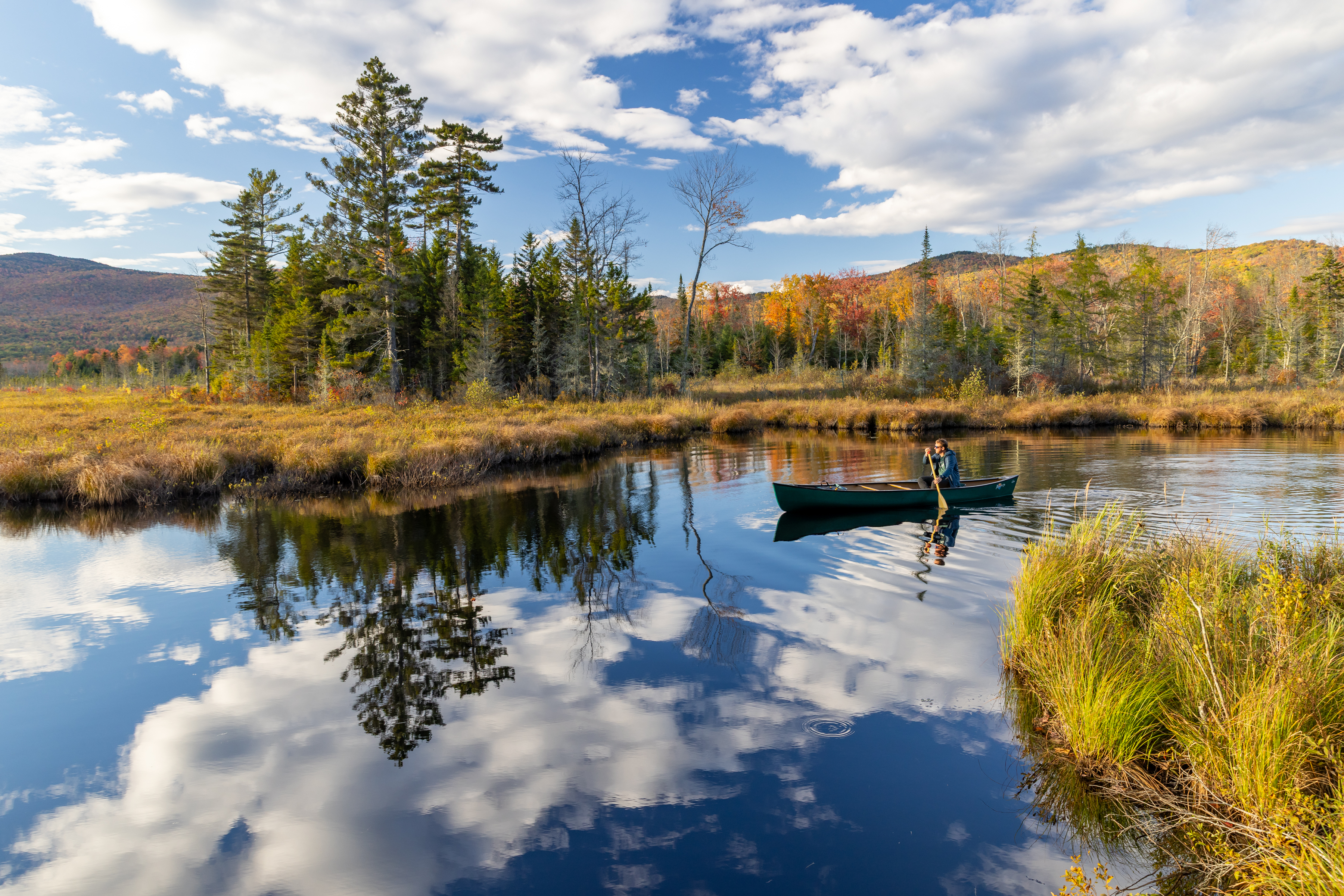- Tags:
- Wildlife,
- Forestry,
- Forest Journal
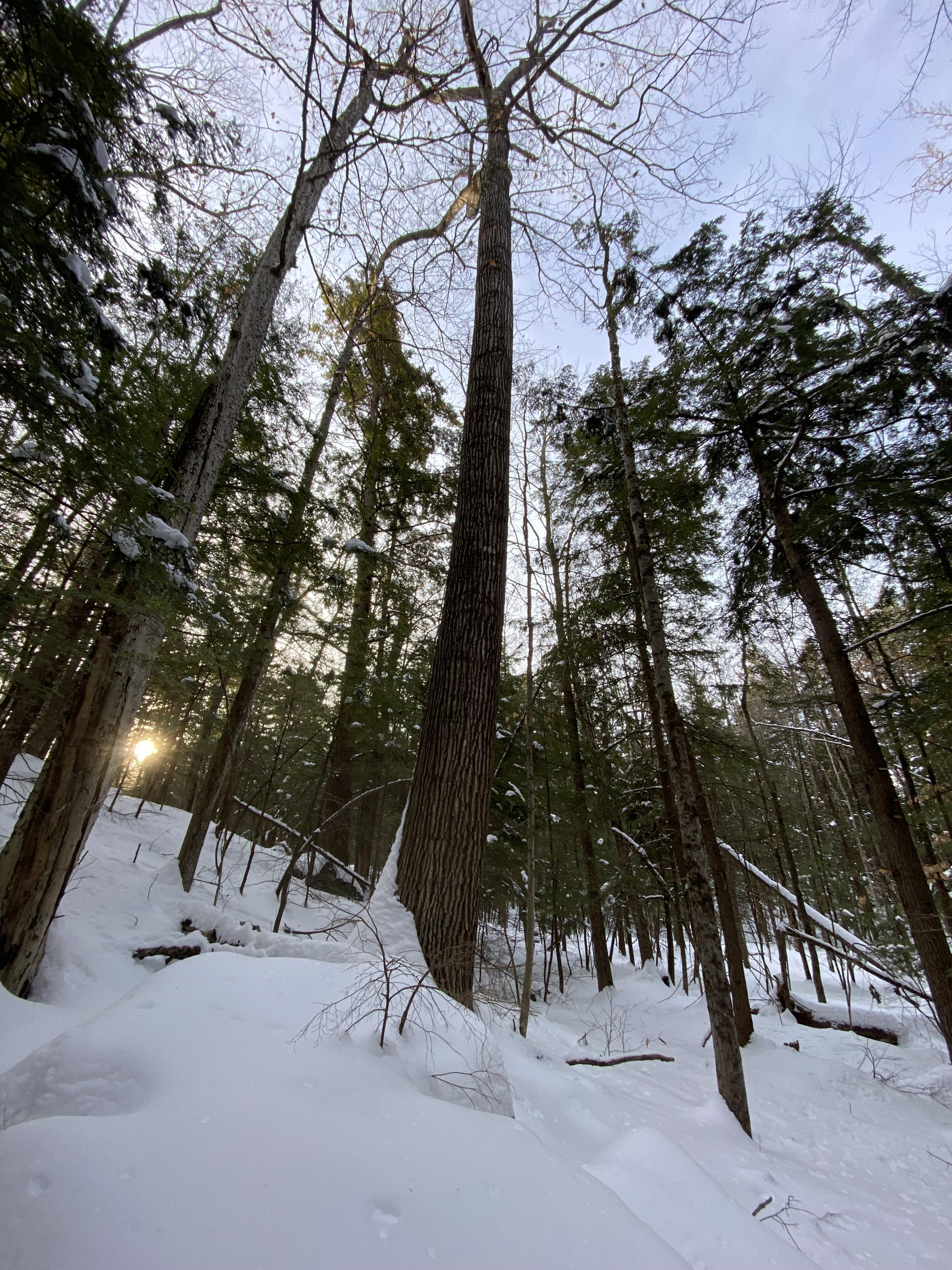
Photo: Dave Anderson
On Friday, a hundred professional foresters are expected to gather at the annual winter meeting of the Granite State Division of the Society of American Foresters at Attitash Mountain Resort in Bartlett. The collective wisdom of the NH forestry community is impressive. Foresters are long-term thinkers because forests - and trees themselves - represent a living embodiment of time. Old foresters are somewhat the same.
When I host forestry friends on my 54-acre Tree Farm, I invariably walk them past my favorite trees. I am crowd-sourcing professional opinions for ideas that inform my next written forest management plan, a requirement to remain certified as a NH Tree Farm. It’s the forest I know best, yet it’s small compared to the 200+ properties totaling 65,000 acres owned and carefully managed by The Forest Society.
Foresters happily share ideas for management: timber inventories, logging prescriptions, building roads and trails or improving wildlife habitat. My wildlife plans have involved creating more openings, releasing apple trees to encourage fruiting and installing owl nest boxes. My forestry goal is to allocate more sunlight to new areas of the forest floor by selective cutting to regenerate young white pine, white oak and red oak seedlings and saplings.
When you ask five different foresters what they recommend, you’re likely to get five slightly different answers. But when I show them my very best trees, they are unanimous: “oh don’t cut that one!”
Foresters think in increments of decades – even centuries. It can take eighty to ninety years to grow a mighty, tall straight red oak or white oak specimen tree which might live 150 years or more. Hemlock and red spruce can live 400 years.
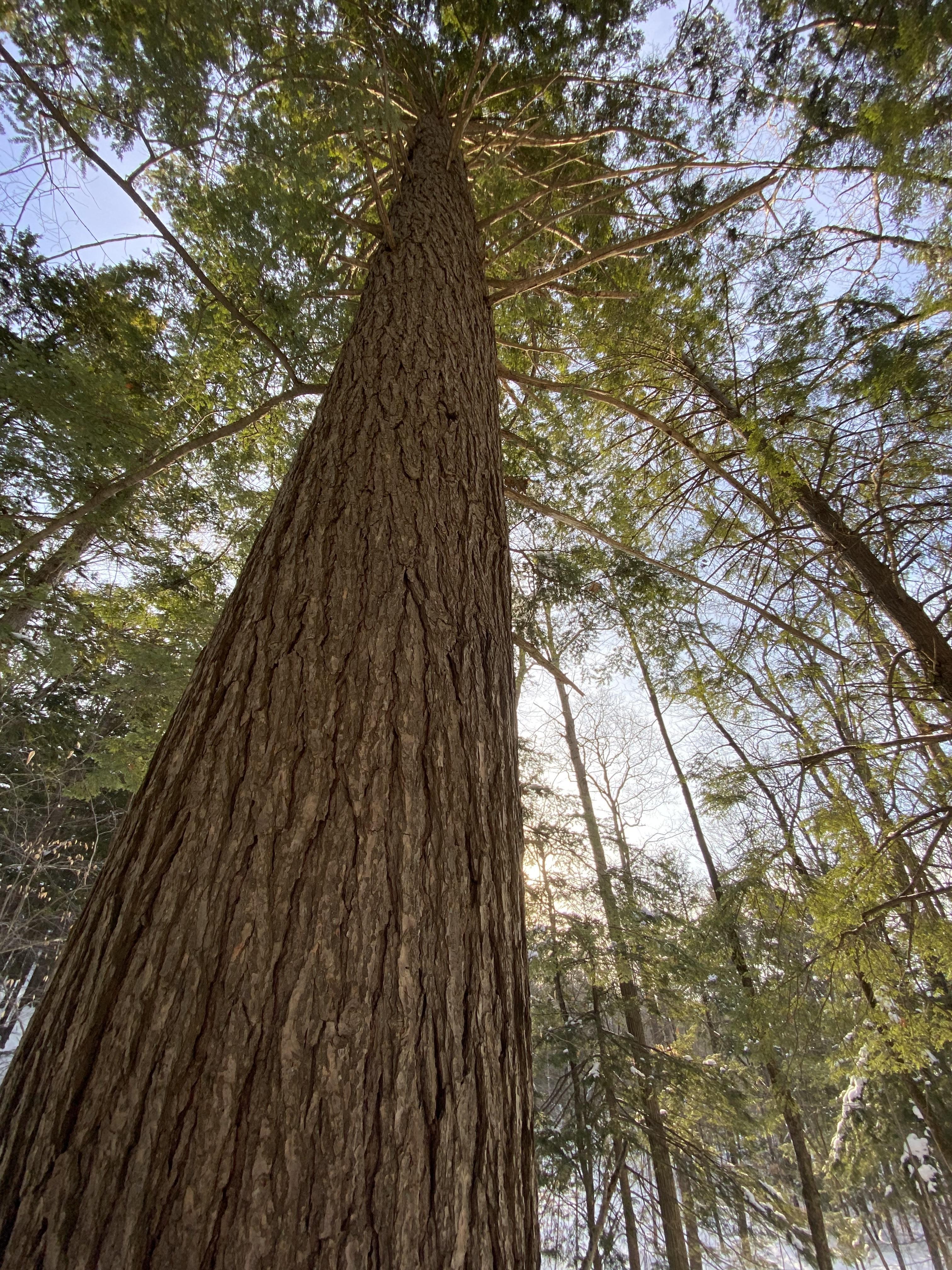
Time on the landscape
Two of my favorite trees are forest monarchs: the largest red oak and a perfect white oak. There is also a pair of adjacent hemlocks, twin towers. None of my woodlot is true old growth. It is a mature hardwood forest where the maximum age is roughly 90 years. The former farm included sheep and cattle pastures in 1925, one century ago. Stonewalls and relict barbed wire fence lines are testament to its agricultural history. There are a few “old field” pasture trees: red oaks, white oaks and sugar maples now crumbling. They grew in the open, along stone walls, providing shade to cows or a little brook.
Like much of NH, the majority of this tract reverted back to forest in the decades following the 1929 stock market crash and ensuing Great Depression. I can verify that by counting annual growth rings of maple, ash and oak trees I cut for firewood. The average age is 80 years: 1945, World War II era. A single white ash tree heating my home this winter was a mere seedling in 1924. It succumbed to Emerald Ash borer in 2024, a century later.
Forest Succession
In the earliest decades after pasture abandonment, my forest comprised White Birch aka “Paper Birch” the NH State Tree; also Aspen, also called “Poplar.” These relatively short-lived, sun-loving trees are disappearing, dying of old age before seventy. White pines that grew in sunny pastures in the 1920’s were logged in the 1970’s at age fifty. The remaining pines have grown much larger in the fifty years since.
Northern red oak and white oak are wonderful wildlife trees due to periodic heavy acorn crops. Trees grown in open sunlight grow fast and have more lower branches. Trees grown in shade in tight competition for sunlight grow straight up toward the canopy. In time, shade-tolerant hemlock and American beech, yellow birch and sugar maple grew in the shade of pines and oaks. Hemlocks acted as “trainers” pushing oaks skyward. This yields higher-quality timber: sawlogs without lower branches or knots for the first thirty feet of perfectly cylindrical trunks.
Climate Conjecture
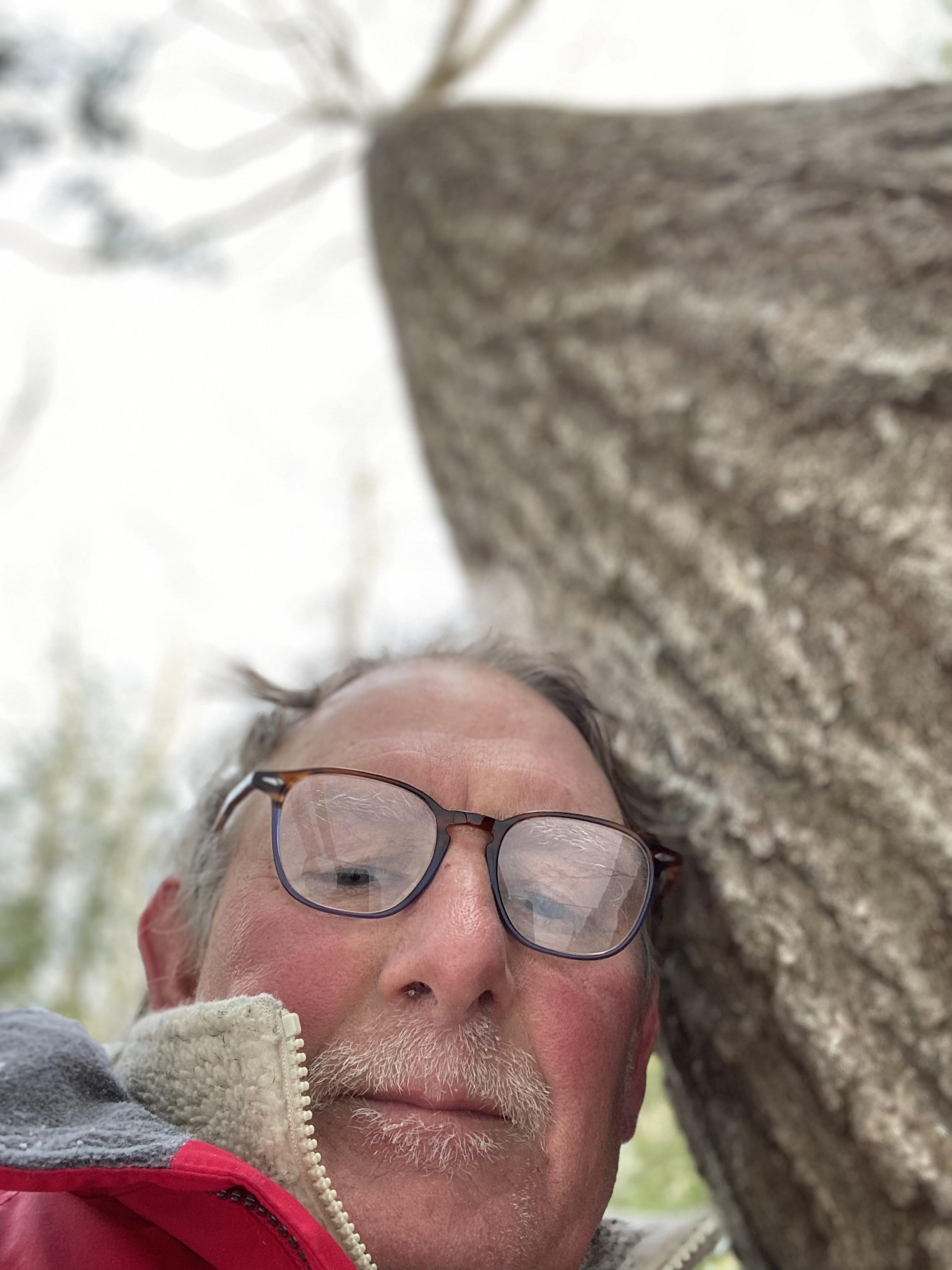
Different trees will inherit these woods: Black Birch, also called Sweet Birch is a southerly species and a strong future contender. It’s possible that Shagbark Hickory currently found as far north as Concord NH will begin growing in the Lakes Region as our climate shifts. Other hardwoods with the potential to occur further north include Sassafras, Black Cherry, Hickory, Black Walnut and Tulip Poplar. Some landowners are already experimenting with “assisted migration,” planting trees from southerly climes. Native trees of the Smoky Mountains of Tennessee or Allegheny Mountains of Pennsylvania might grow in warmer valley locations even in northern New England whereas cold-adapted sugar maple and red spruce are less likely to regenerate as northern winters grow warmer and less snowy.
Standing at the roots of my favorite tree, a massive red oak growing at the base of a jumble of boulders where the hillside spills moisture and nutrients to the oak’s roots, my forester friends marvel. I beam and hug the trunk. “Just look at this one!”
Logging some of the giants might net a few hundred dollars more. That could be three times as much once it is cut, skidded down to the timber landing and trucked to a log concentration yard before being shipped to a distant mill. The very best trees always net premium log prices. Foresters admire big trees too. It is possible to grow big trees in one area and manage other areas to encourage regeneration of young forest. These decisions are best made by a professional forester who clearly understands the landowner’s objectives. What might be most lucrative is not always what is best for the forest itself.
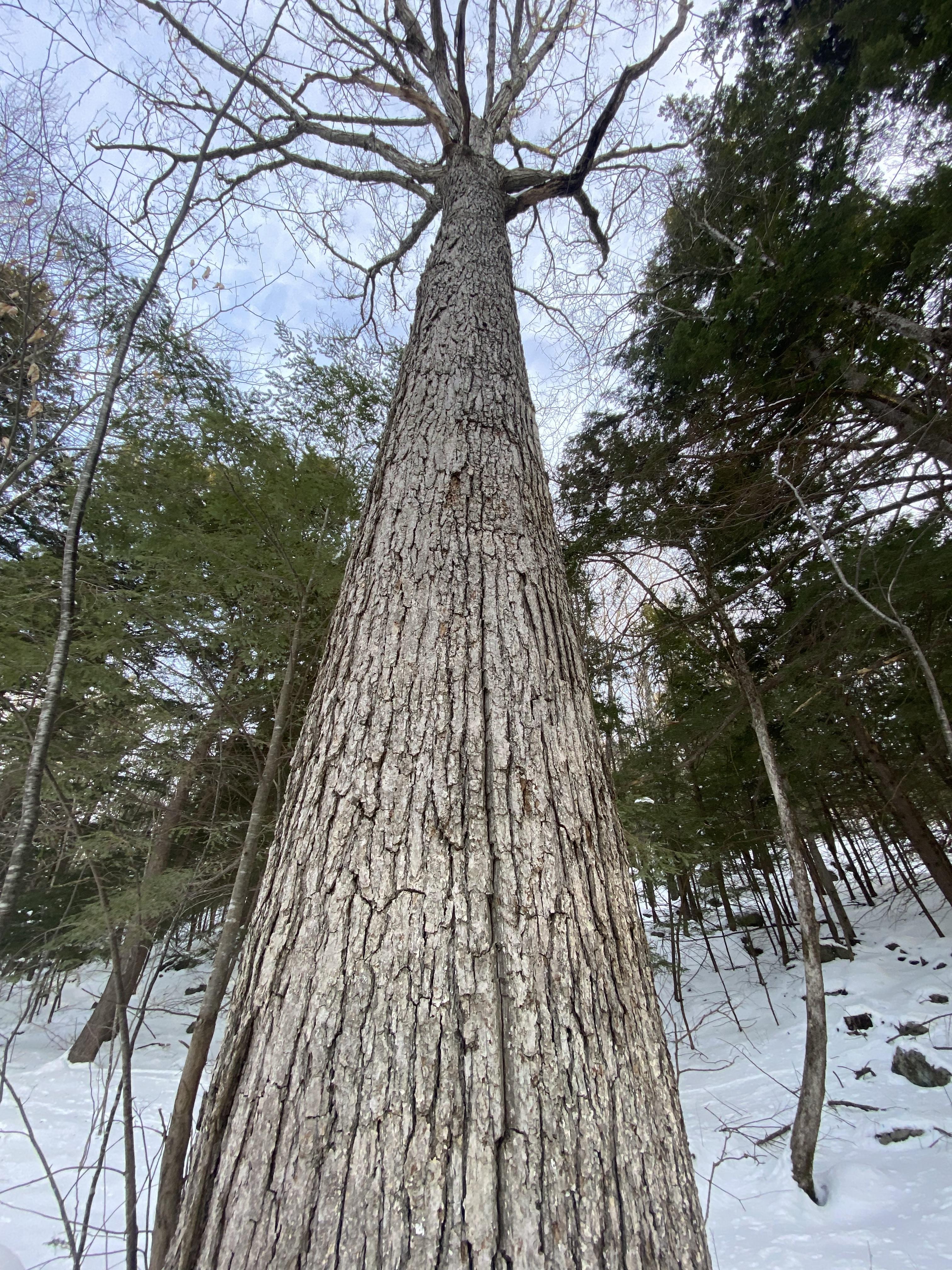
My forester friends agree my favorites should NOT be cut for mere dollars. It is worth more than a few hundred bucks to continue to hike up into the woods just to admire them and yes, even hug them!
Big trees are a testament to what is possible to grow on the right soils with a good site index for that tree. Our forests are capable of producing extraordinarily beautiful large old trees. With careful planning and enlightened restraint, my favorite trees could live another century. By then, their value as sawlogs will have degraded. Trees senesce. Yet even declining old trees and standing dead snags and fallen rotting logs play an important ecological role in the forest. Every gap in the canopy allows sunlight to reach the forest floor to regenerate the next forest.
Burroughs Award-winning naturalist John Hay wrote:
“These trees might tell us where to whet our minds and appetites and examine our credentials for sight and hearing. They are keepers, not just of a wilderness apart, a reserve for the benefit of study and ecological research, but of a testing ground. A real acquaintance with them is more than good enough for the grace that living asks of us…
… We lose our companions. We lose our way, because an age where all things are expendable makes it increasingly hard to identify what we need, and for that, reason is not enough. You cannot follow trees if they are not in you, but only in your way.”
A version of this ran in the Manchester Union Leader on February 16.
